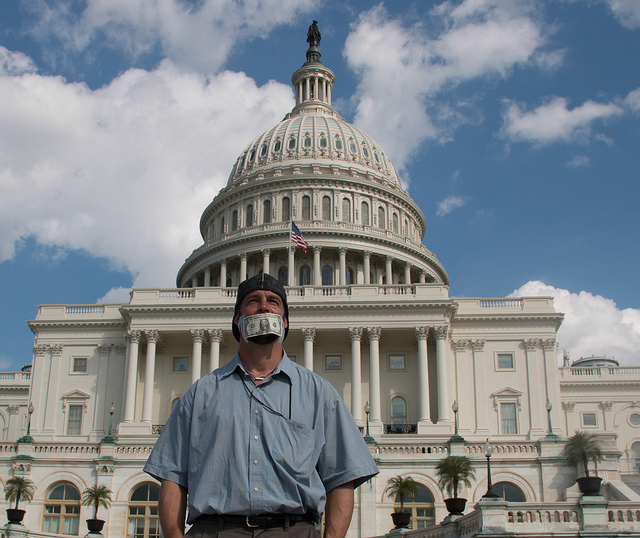Throughout the shutdown, American media have repeatedly reminded us that there have been seventeen prior to this one. The suggestion is that shutdowns aren’t that big of a deal. The fact is that every one of them hurts the country. It’s time that the press presented the problem differently.
The United States did not suffer a single government shutdown for the first two centuries of its history. The shutdowns only begin in 1976, when President Ford vetoed spending bills that he attacked for not paring government expenditures enough.
The Ford shutdown was followed by the longest non-consecutive shutdown in American history. I say “non-consecutive,” because it was broken up by two separate temporary spending bills, which were passed because when the shutdown occurred in late 1977, Democrats had full control of the House and Senate.
The prolonged fight, which extended from September 30th to December 9th, was about Medicaid dollars being used for abortion. The House wished to restrict this, while the Senate wanted to expand it to include cases of rape and incest, and when the mother’s life is in danger. Eventually, the Senate won out, and the inter-party combat between rival factions ended. Abortion funding would once again lead to a government shutdown in 1979, and continued to be a contentious part of the budget process for decades.
The Carter Administration also presided over a shutdown in 1978 due to President Carter vetoing funding for a nuclear-powered aircraft carrier that he saw as wasteful. Military spending debates either partially or indirectly, led to shutdowns in 1981, 1982, 1983, in addition to several related problems with the Iran-Contra Affair in 1983 and 1987.

Of course, the shutdowns of the 1970s should not be seen as equal to the current shutdown. It was only in 1980 and 1981 that shutdowns became total, before that only being a partial suspension of government services. Attorney General Benjamin Civiletti interpreted the Anti-deficiency Act of 1884 as meaning that a failure to pass a budget meant either a partial or total shutdown of the federal government.
And the remaining shutdowns? They were mainly focused on pushes for deficit reduction, anda reduction in the welfare state. Efforts to reduce spending were at least partially to blame for the shutdowns of 1981, 1984, 1986, 1990, and the most reason one in 1995. From 1980 to 1992, shutdowns were resisted by Congress. During the Clinton Administration, they were proposed by the habitually uncivil Newt Gingrich, who was riding off an ongoing strain of Reagan mythology in American politics.
President Reagan said in his first inaugural address that, “government is not the solution to our problems, government is the problem.” He was speaking to a stagnating America in which President Johnson‘s Great Society legislation was still recent news. The political fights that Reagan had over deficit reduction were, in part, about reducing the number of people who received government assistance. Today’s shutdown adheres to a similar set of goals, however indirectly. Suspending government activities means limiting its services to the poor.

This sounds like the logic of a mass strike against free market conditions, sent in the opposite direction by right-wing politicians. It’s as though the extremist wings of the post-Citizens United Republican Party have become a Congressional labor movement-equivalent for the 1%, willing to lead the system to the brink of collapse.
The danger of this is that it turns into a technocratic exercise. The main controversy, inevitably, of the shutdown, becomes governmental efficiency, and the necessity of the political system continuing without suspension. Demands for the efficiency through technocracy, and a crackdown on anti-efficient dissent, become more and more appealing. How else are we to interpret this bizarrely dualistic statement by President Obama, that is both anti-union and anti-Republican?
I was at a small business the other day and talking to a bunch of workers, and I said, you know, when you’re at the plant and you’re in the middle of your job, do you ever say to your boss, you know what, unless I get a raise right now and more vacation pay, I’m going to just shut down the plant; I’m not going to just walk off the job, I’m going to break the equipment — I said, how do you think that would go? They all thought they’d be fired. And I think most of us think that. You know, there’s nothing wrong with asking for a raise or asking for more time off. But you can’t burn down the plant or your office if you don’t get your way. Well, the same thing is true here.
Since the shutdown shares some characteristics with grassroots demonstrations and mass strikes, senior leaders in the Democratic Party also have the rhetorical opportunity to affirm their own anti-union stances, while entertaining welcome confrontations with Tea Party Republicans. Again, the only beneficiary of the shutdown becomes the private sector.
It’s important to remember that this shutdown is taking place in the context of billions of dollars in cuts to public spending. Take, for example, the uses to which the sequestration has been put, and, conversely, congressional efforts to curtail food stamps. The cumbersome nature of American “big government” may not work particularly well, owing mainly to how much money disappears in its heavily systematized nature, but governments that only serve the wealthy don’t work at all. How else are we to read the complete stoppage of the federal government over more people being provided healthcare?
Photographs courtesy of Brent Moore, and Victoria Pickering. Published under a Creative Commons License.





